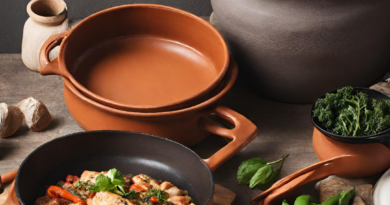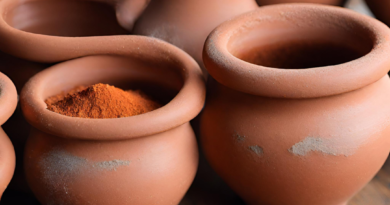How do you adjust cooking times when using clay?
Adjusting cooking times when using clay cookware is essential because clay pots have unique heat retention and distribution properties. Here are some guidelines for adapting cooking times when cooking with clay:
1. Preheat Gradually
Start with low to medium heat when preheating the clay pot, whether on the stovetop or in the oven. Clay pots heat up slowly but retain heat effectively. Gradual preheating helps prevent overheating and overcooking.
2. Shorter Cooking Times
In general, clay cookware may require shorter cooking times compared to metal or glass cookware. The efficient heat retention of clay means that food continues to cook even after the heat source is turned off. Therefore, it’s best to start with slightly shorter cooking times than your usual recipe calls for.
3. Check for Doneness
Regularly check the doneness of your dishes as they cook. Use a thermometer, if appropriate, to monitor internal temperatures. Taste-test the food to assess its texture, tenderness, and flavor.
4. Stovetop Cooking
When using clay cookware on the stovetop, adjust the heat to a lower setting than you would with other types of pots. This helps prevent overheating and allows for gentle, even cooking.
5. Oven Cooking
When using clay cookware in the oven, you may need to reduce the temperature specified in your recipe by about 25°F (14°C) and closely monitor the cooking progress. Adjust the cooking time accordingly, as the clay pot retains heat effectively.
6. Practice and Experience
Over time, you’ll become more familiar with how your specific clay pot responds to different cooking techniques and recipes. Experience and observation are valuable for fine-tuning cooking times.
7. Adapt Recipes
When adapting recipes for clay cookware, start with the recommended cooking times but be prepared to make adjustments based on your observations and taste tests. Note any differences in cooking times for future reference.
8. Consider the Dish
The type of dish you’re preparing will also influence cooking times. Dishes that benefit from slow, even cooking, such as stews, braises, and roasts, are well-suited to clay cookware and may require less adjustment. For dishes that require rapid or high-heat cooking, such as frying, clay cookware may not be the best choice.
9. Keep a Cooking Journal
If you frequently use clay cookware, consider keeping a cooking journal where you record cooking times and notes for different recipes. This can serve as a helpful reference for future cooking.
Remember that clay cookware is versatile and can be used for a wide range of dishes, but it does require a bit of practice and adjustment to achieve the best results. By paying attention to your cooking times and making necessary adaptations, you can harness the unique qualities of clay cookware to create delicious and flavorful meals.



